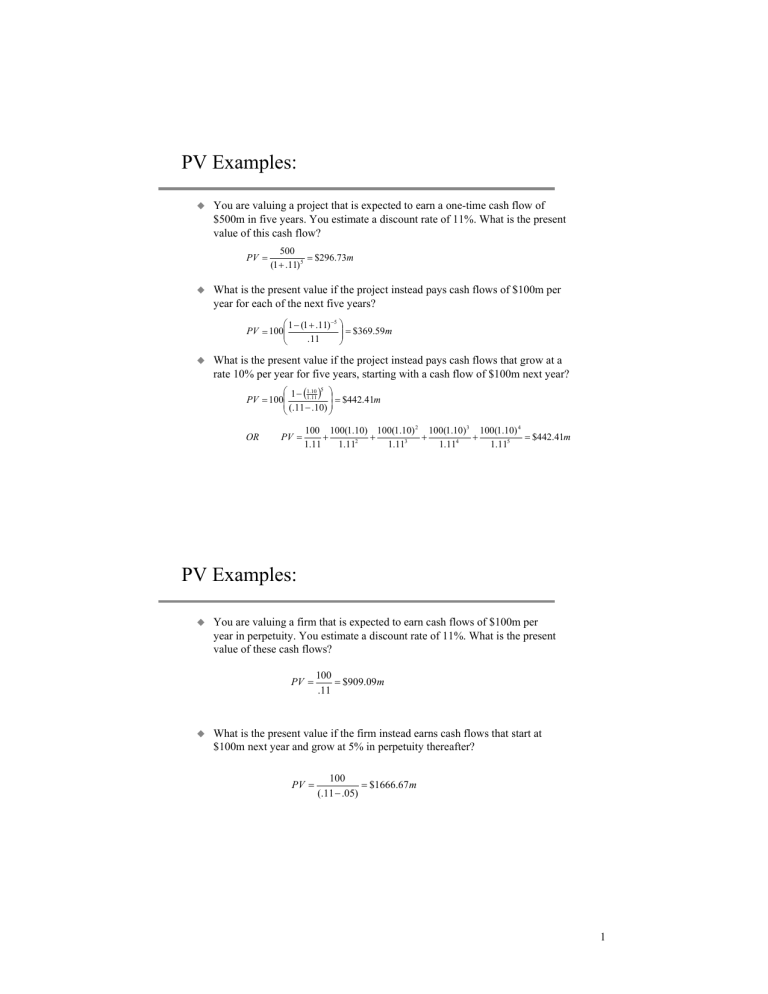
Calculating the Present Value of multiple cash flows is actually very similar to the single cash flow case. So let’s go ahead now and step things up just a little bit by considering the case with multiple cash flows. The default calculation above asks what is the present value of a future value amount of $15,000 invested for 3.5 years, compounded monthly at an annual interest rate of 5.25%.
Want to get past your fear of financial math?
If we assume a discount rate of 6.5%, the discounted FCFs can be calculated using the “PV” Excel function. We’ll assume a discount rate of 12.0%, a time frame of 2 years, and a compounding frequency of one. The core premise of the present value theory is based on the time value of money (TVM), which states that a dollar today is worth more than a dollar received in the future.
Example of PV Formula in Excel
One key point to remember for PV formulas is that any money paid out (outflows) should be a negative number, while money in (inflows) is a positive number. The Present Value is an incredibly important concept – it’s what approximately 70-80% of Finance is based on in one way or another. So it’s the value of something expressed in today’s terms or in present terms. We’re going to assume that you’re more or less alright, so let’s actually just think about that equation in a little more detail.
DCF Present Value (PV) Calculation Example
Always keep in mind that the results are not 100% accurate since it’s based on assumptions about the future. The calculation can only be as accurate as the input assumptions – specifically the discount rate and future payment amount. The net present value calculator is easy to use and the results can be easily customized to fit your needs. You can adjust the discount rate to reflect risks and other factors affecting the value of your investments. What that means is the discounted present value of a $10,000 lump sum payment in 5 years is roughly equal to $7,129.86 today at a discount rate of 7%.
- Some individuals refer to present value problems as “discounted present value problems.”
- The core premise of the present value theory is based on the time value of money (TVM), which states that a dollar today is worth more than a dollar received in the future.
- But one of the most popular investment appraisal tools is the Net Present Value (NPV).
- Stocks are also often priced based on the present value of their future profits or dividend streams using discounted cash flow (DCF) analysis.
- Present Value, or PV, is defined as the value in the present of a sum of money, in contrast to a different value it will have in the future due to it being invested and compound at a certain rate.
- Present value is also useful when you need to estimate how much to invest now in order to meet a certain future goal, for example, when buying a car or a home.
For example, if you wanted to figure out the present value of an amount that you’re expecting to receive in three years’ time, place the number “3” for the “n”. Figure out the interest rate that you are expecting to receive between now and the future. Input the future value of the amount you expect to receive in the numerator of the formula. As always, because we’re working with timeframes over here, it’s a good idea to start with the timeline.

As long as the NPV of each investment alternative is calculated back to the same point in time, the investor can accurately compare the relative value in today’s terms of each investment. Of course, both calculations also hinge on whether the rate of return you chose is accurate. As shown above, the future value of an investment can be found by using the present value of a single amount formula and adjusting for compound interest. The present value of a single amount formula is most often used to determine whether or not an investment opportunity is good. To solve the problem presented above, first, determine the future value of $1,000 invested at 12%.
The value of a future promise to pay or receive a single amount at a specified interest rate is called the present value of a single amount. If you haven’t quite understood it just yet, then please pause for a moment now. Take your time to think about the equation and think about how it is actually a function of two things — future expectations and risk. That’s how we incorporate the risk of not earning future expectations, into our estimate for the present value. Explore our Financial Math Primer course, designed for absolute beginners like you. And we’re saying that we want to have exactly $12,500 in our bank account in precisely one year’s time.
However, the ease comes at the cost of accuracy which can lessen the financial benefits. Any asset that pays interest, such as a bond, annuity, lease, or real estate, will be priced using its net present value. Stocks are also often priced based on the present value of their future profits or dividend streams using discounted cash flow (DCF) analysis. The big difference between PV and NPV is that NPV takes into account the initial investment. The NPV formula for Excel uses the discount rate and a series of cash outflows and inflows.
11 Financial is a registered investment adviser located in Lufkin, Texas. 11 Financial may only transact business in those states in which it is registered, or qualifies for an exemption or exclusion from registration requirements. When you start working with time value of money problems, you need to pay attention to distinguish between present value and future value problems. Similar to future value tables, present value tables are based on the mathematical formula used to determine present value. Due to the relationship between future and present values, the present value table is the inverse of the future value table. One way to solve present value problems is to apply the general formula we developed for the future value of a single amount problems.
You can also incorporate the potential effects of inflation into the present value formula the 5 best accounting software for small business of 2021 by using what’s known as the real interest rate rather than the nominal interest rate.
